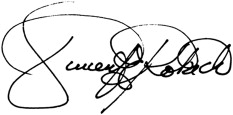Temporary anchorage devices have revolutionized our ability to move teeth. No longer are we concerned about retracting or protracting teeth without moving the anchor teeth. We can completely avoid using the support of posterior teeth to retract incisors or the support of anterior teeth to protract molars. In some cases, we can even avoid the use of extraoral appliances, which have always been objectionable to patients and therefore less dependable for providing absolute anchorage. After all, miniscrews and miniplates are relatively stable in the long term. But even long-term stability is not necessary for anchorage plates or screws because they not needed for more than 6 to 9 months. So is this miracle tool the best orthodontic adjunct developed in many years? Maybe not.
Certain biologic and esthetic principles exist in orthodontics and dentistry that previous research has shown are inviolate, no matter what magic device we use. As clinicians, we must remember that these principles cannot be overcome, even with an immobile screw or plate. I have attended meetings at which temporary anchorage devices were extolled for their ability to accomplish unbelievable types of tooth movement. But were these movements appropriate or stable? In some cases, their use might be inappropriate. Let me give you 2 examples.
I read a case report in another orthodontic journal that described the treatment of a girl in late adolescence with a deep anterior overbite and a gummy smile. The treatment plan was to intrude her maxillary incisors to eliminate her gummy smile and correct the deep overbite at the same time. To make certain that the maxillary incisors would intrude, a miniscrew was placed in the labial midline of the anterior maxilla above the roots of the central incisors. An elastomeric chain was used to intrude the maxillary incisors by 3 mm. As a result, the deep overbite was reduced, and the gummy smile disappeared. Sounds like a wonderful result. Wrong.
Here is the problem. Before any orthodontic treatment, the distance from this patient’s upper lip to her maxillary central incisal edge at rest was 4 mm. This is nearly normal for an adolescent. After intruding the maxillary central incisors by 3 mm, the distance from her incisal edge to her upper lip after orthodontics was 1 mm. By the time she is 30 years old, this patient will most likely show no maxillary incisal edge at rest. The deep overbite was due to overeruption of the mandibular incisors. Wrong diagnosis and wrong solution.
Here is another example. Recently, I read several case reports documenting the use of miniscrews and miniplates to intrude maxillary and mandibular posterior teeth to correct anterior open bites. Obviously, the treatment of a significant open bite without maxillary or mandibular jaw surgery would definitely benefit the patient. Or would it?
What happens when maxillary or mandibular molars are intruded? The posterior facial height is reduced. The patient’s vertical dimension of occlusion is reduced. But do the muscles accommodate immediately to this shortening of the face? Not always, according to previous research that evaluated the long-term effects of maxillary impaction surgery. According to lateral cephalometric radiographs documenting the vertical changes, the vertical dimension often reopens, and the posterior teeth erupt.
In addition, if the open bite were corrected with tooth intrusion, we know that the change in direction of the periodontal ligament fibers during tooth intrusion must be retained to prevent reeruption of these teeth. In other words, just because a screw or plate can be used to effect a movement that was previously difficult to achieve, it does not mean that the result will be stable.
What is my point? Miniscrews and miniplates are wonderful. I have used them to achieve anchorage in cases that before would have been difficult. But I also realize that I must respect the biologic principles that govern our ability to manipulate teeth and bone during orthodontic and orthopedic treatment. Before selecting a miniscrew or miniplate to accomplish some dramatic or heroic type of tooth movement, we must ask ourselves whether the change that we are seeking is biologically reasonable and physiologically stable. After all, the appliance is only a screw!





